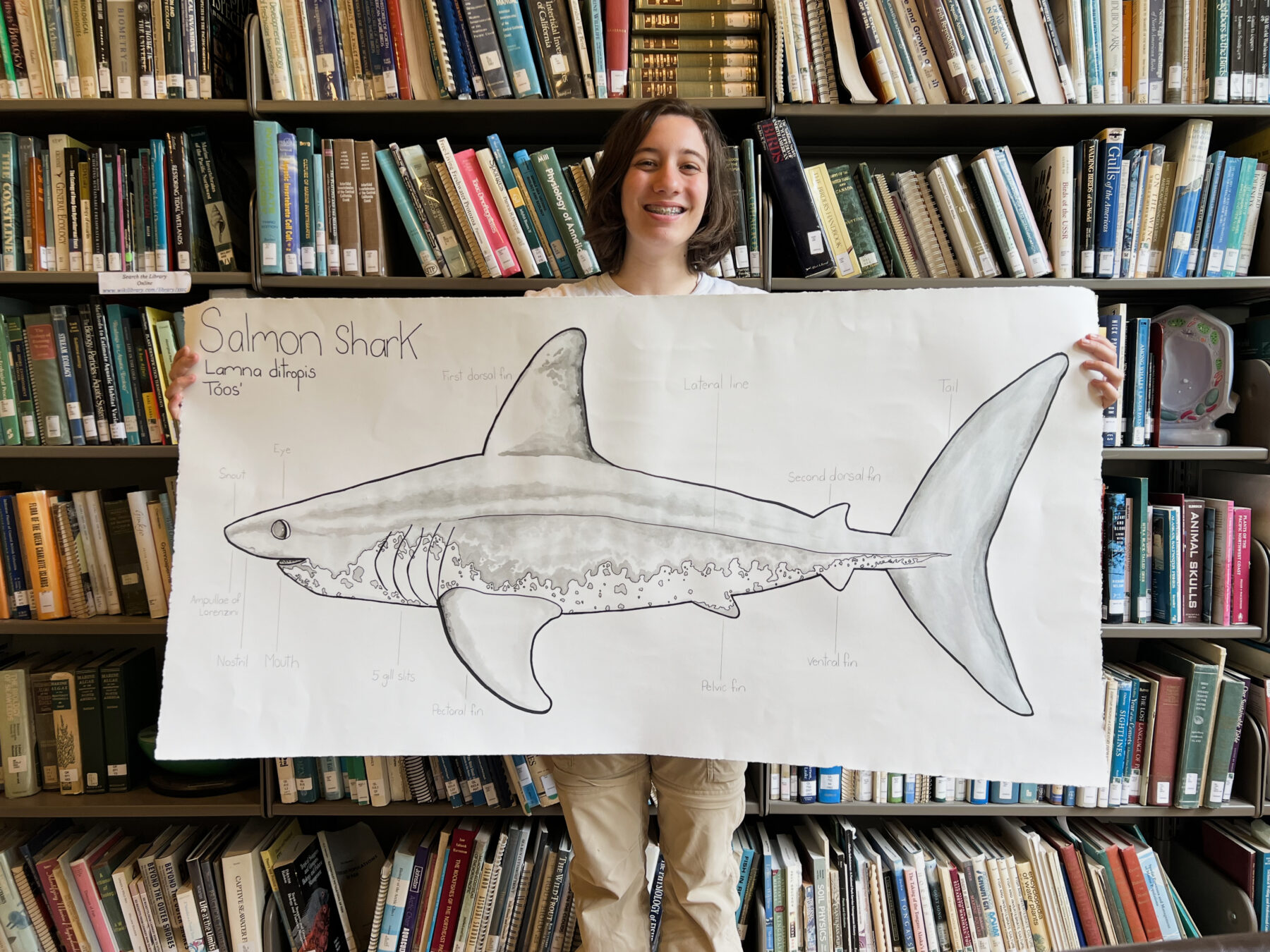
News, Research, Featured
News, Research, Featured
News, Research, Featured
Beneath Alaska Waters
Two hundred million years before the dinosaurs and before there were trees on Earth, there were sharks in the ocean. They were the first vertebrates to develop jaws.
Sharks belong to the class Chondrichthyes, which includes all cartilaginous fishes. Despite the fear they evoke, most shark species are relatively small, with an average length of around four feet.
Alaska’s waters are home to several shark species, the most prominent being Sleeper sharks, Dogfish sharks, and Salmon sharks. Other migratory species visit Alaska waters like Blue sharks, which are known to travel incredibly long distances. Each of these species plays a role in the marine ecosystem.
Pacific sleeper sharks dwell in deep parts of Alaska’s waters which makes them difficult to study. They’re identified as ‘data deficient’ by the IUCN (endangered species list). In other words, little is known about their growth rates, longevity, and natural mortality. They’re also difficult to age; though research done by NOAA on other closely related species suggests they are long-lived, which unfortunately makes them susceptible to fishing pressures and environmental changes.
Dogfish sharks, on the other hand, are often caught as bycatch by Alaskan fishermen. Although less common now, they’ve previously been observed in the raceway channel at the Science Center. They’re frequently seen exhibiting social behavior by swimming in packs.
Similarly, Salmon sharks are caught as occasional bycatch, with notable increases in the 90s in regions of Prince William Sound and the northeastern Gulf of Alaska. In Sitka, Science Center staff have previously reported Salmon shark sightings. Staff engaged in fishing have caught mature Salmon sharks on longlines north of Chichagof, and some observers have witnessed them breach feeding on salmon at Port Graven in Prince William Sound. Last November, a Salmon shark was even seen in the Indian River at Totem Park! Salmon sharks are significant predators, consuming a substantial portion of marine life in the Gulf of Alaska. Their high metabolic rate and abundance place them among the top consumers in the marine ecosystem which impacts the entire food web.
As apex predators, sharks are essential for maintaining the balance of marine ecosystems. They regulate the key prey species of their residing environment, which may include bony fishes, cephalopods, crustaceans, or pinnipeds, ensuring that the ocean remains a healthy and functioning system. Sharks contribute to the stability of marine life, which in turn, supports human life. The oceans supply nearly half of the oxygen we breathe and serve as a primary protein source for over a billion people. Unfortunately, in the past 50 years, shark populations have plummeted 70% from human activities in shark finning, overfishing, and bycatch.
Today, the annual slaughter of over 100 million sharks has reached an unprecedented rate, driven by demands for their fins, liver oil, and consequences of bycatch, among other human activities. The practice of shark finning, where fishermen cut off the fins of a shark and discard it back into the ocean, leads to prolonged suffering and death for these animals. This finning technique wastes more than 95% of the animal. Shark fins are prized for their use in shark fin soup, which is a delicacy in many Asian countries, but is also consumed globally. The shark trade also targets sharks for their high concentrations of squalene in their liver. Products we use daily, from cosmetics to vaccines and soaps and creams, contain shark-derived squalene. Although squalene can be sourced from plants, it’s often bypassed in favor of the cheaper shark-derived alternative.
Efforts to protect sharks are ongoing, with international agreements like CITES (the Convention on International Trade in Endangered Species), working to safeguard critical species. The United States has recently banned shark fin trade (the transport of shark fins) just last year. However, loopholes and illegal practices continue to threaten their survival. Public awareness and support are crucial in the fight to conserve these magnificent creatures and the ecosystems they inhabit.
Public support is crucial, but it remains a challenge due to the perception of the ocean as a place of danger. The release of the movie Jaws amplified this perception, planting an exaggerated fear of the ocean and leading to misconceptions about sharks. The iconic ‘dundun…dundun…dundundundun’ soundtrack is etched in our collective memory. However, despite this perceived fear, sharks play a critical role in maintaining the health of our oceans.
Among the 500+ species of sharks known to science, only four—White, Tiger, Bull, and Oceanic Whitetip sharks—are responsible for the bites on humans. Statistically, the likelihood of dying from a shark attack is extremely low; one is more likely to die from a vending machine accident, a mosquito bite, a lightning strike, or even falling out of bed. Humans simply aren’t the appropriate prey for sharks because they digest too slowly to cope with the high ratio of bone to muscle and fat. So, why do sharks attack us then? Sharks don’t have hands; the only way for them to investigate their underwater world is with their mouths which unfortunately results in the occasional bite. Despite their portrayal as dangerous predators, sharks are not the monsters of the deep that many imagine them to be. We’re more of a threat to them than they are to us.
Sharks are not the monsters of our nightmares; they balance our oceans and are vital to the health of the marine ecosystem. Although the sharks of Alaska require further study, they contribute to a healthier marine environment by preying on sick and weak animals and regulating animal populations. Protecting them is not just about conserving a species, but about maintaining the balance of life on Earth.

Image features author Cal Stranzl with her life size rendering of an adult Salmon Shark
Check out these resources for more information:
https://www.sharkwater.com/sharkwater/ Sharkwater Foundation
https://www.sharks.org/ Shark Research Institute
http://www.elasmo-research.org/ ReefQuest Center for Shark Research
https://sharkstewards.org/ Shark Stewards
https://www.ocearch.org/tracker/ Ocearch
The Sharkwater Foundation has a list of products that may contain shark and the ingredients to watch out for: https://www.robstewartsharkwaterfoundation.org/articles/products-containing-sharks
